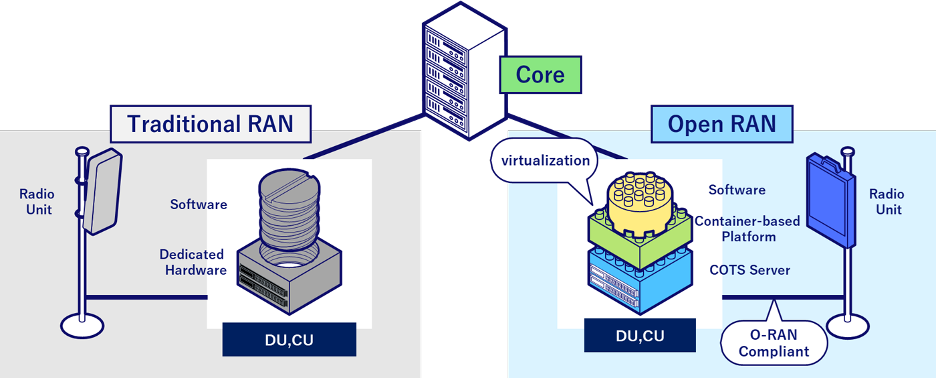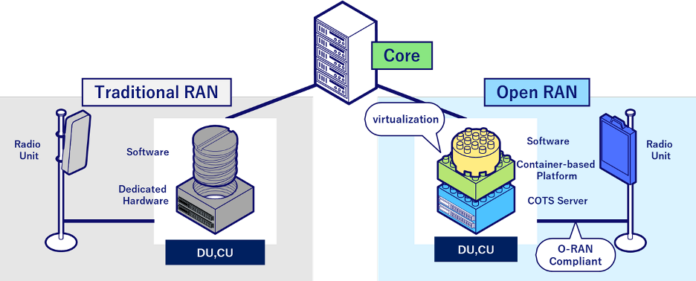KDDI worked with partners Samsung and Fujitsu to turn on the Open RAN site in Japan
KDDI is claiming to have turned on the world’s first commercial 5G Standalone (SA) Open Radio Access Network (Open RAN) site in partnership with Samsung and Fujitsu. Powered by virtualized Radio Access Network (vRAN), the first network site went live in Kawasaki, Kanagawa today.
“Together with Samsung and Fujitsu, we are excited to successfully develop and turn on the world’s first commercial 5G SA Open RAN site powered by vRAN,” commented Kazuyuki Yoshimura, CTO at KDDI. “Taking a big step, we look forward to continue leading network innovation and advancing our network capabilities, towards our vision of delivering cutting-edge 5G services to our customers.”
The network site uses Samsung’s Open RAN compliant 5G virtualized CU (vCU) and virtualized DU (vDU), as well as Fujitsu’s Massive MIMO radio units, also Open RAN compliant.

There are several key elements at play here beyond Open RAN. The first is 5G SA, which refers to using the 5G NR access network on a new 5G network core, as opposed to linking an LTE core to new radios supporting 5G frequency bands as is done in Non-Standalone (NSA) architecture. Most 5G networks are currently using an NSA architecture. 5G SA will deliver superior performance, higher speeds and lower latency and make possible advanced applications, such as network slicing and Multi-access Edge Computing (MEC).
The second is network virtualization. By replacing dedicated hardware with software elements, virtualization and Open RAN technology brings a new level of flexibility and agility to KDDI’s network, which the operator said will allow it to offer enhanced mobile services. Additionally, KDDI said this architecture will leverage system automation, providing more reliability, while accelerating deployment of Open RAN throughout Japan, including in rural areas.
“The Open RAN-based ecosystem offers many exciting possibilities and this latest milestone with KDDI and Samsung demonstrates the innovative potential of next-generation mobile services with Massive MIMO Units. Fujitsu will continue to enhance this ecosystem, with the goal of providing advanced mobile services and contributing to the sustainable growth of our society,” stated Shingo Mizuno, corporate executive officer and vice head of the system platform business at Fujitsu.
The companies said today’s deployment is only the beginning and that throughout 2022, other parts of Japan will receive Open RAN sites.


